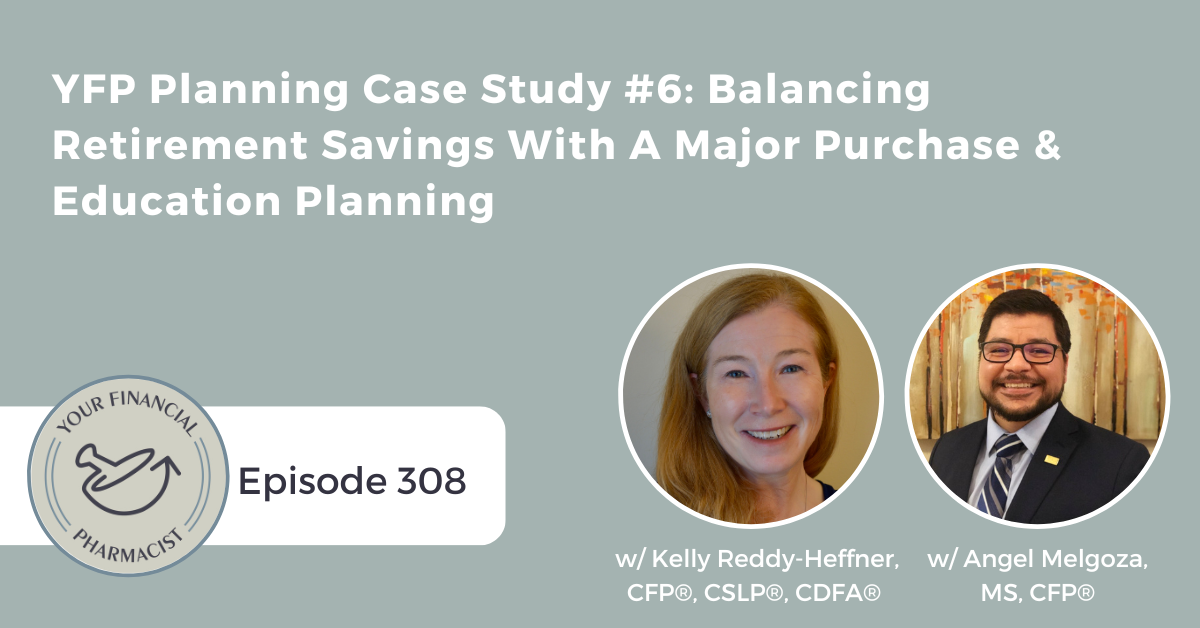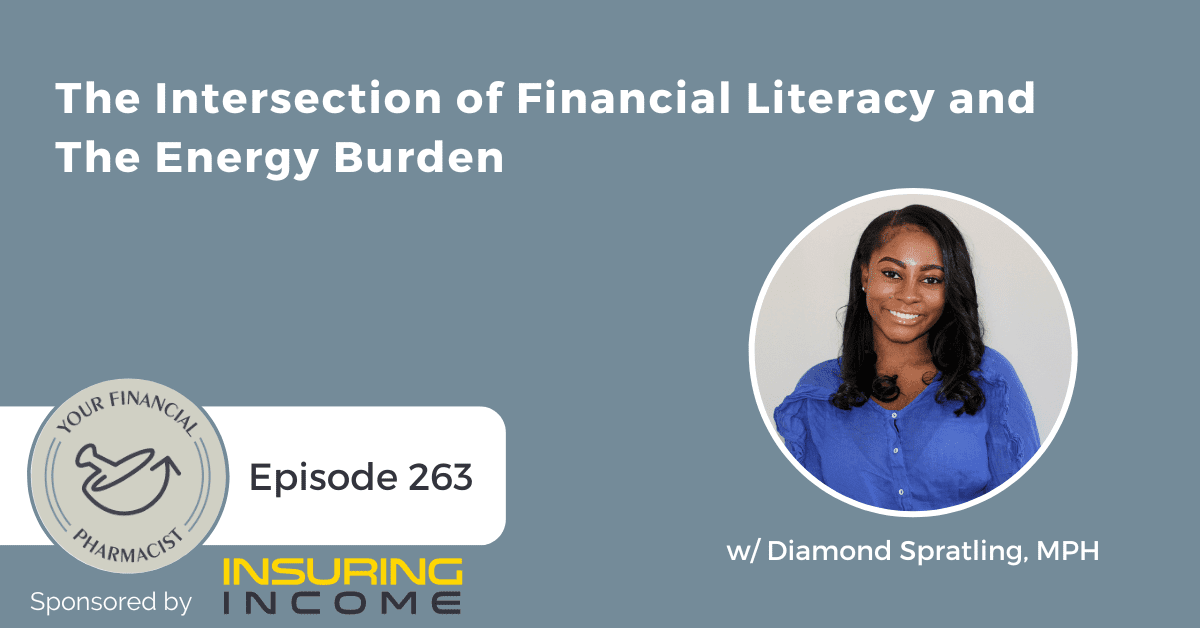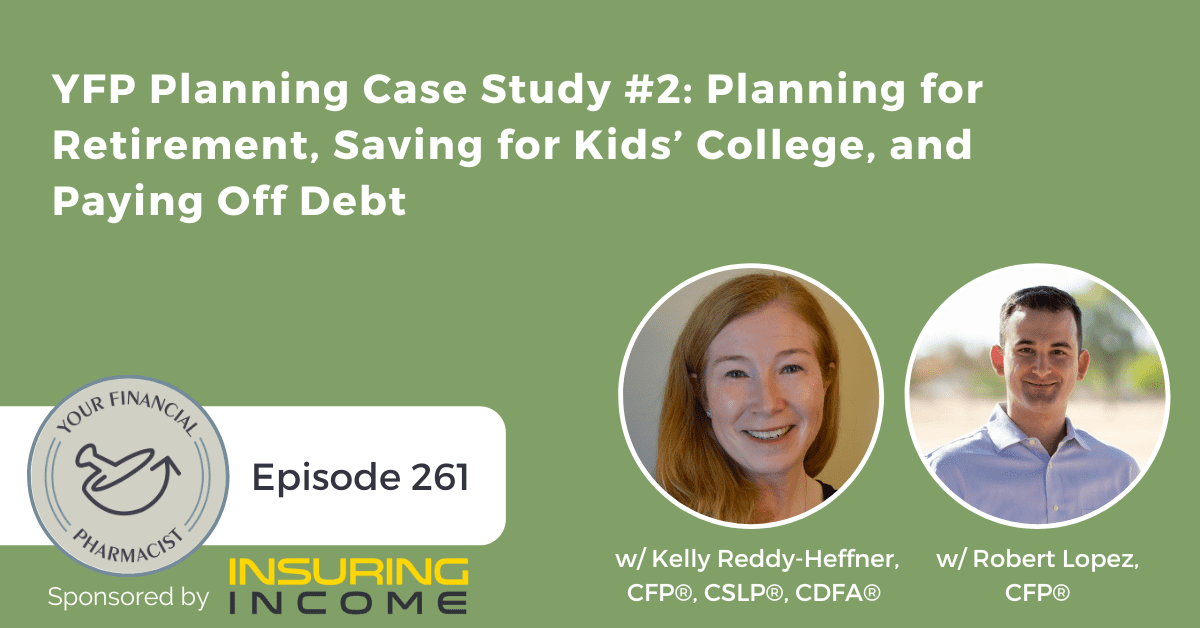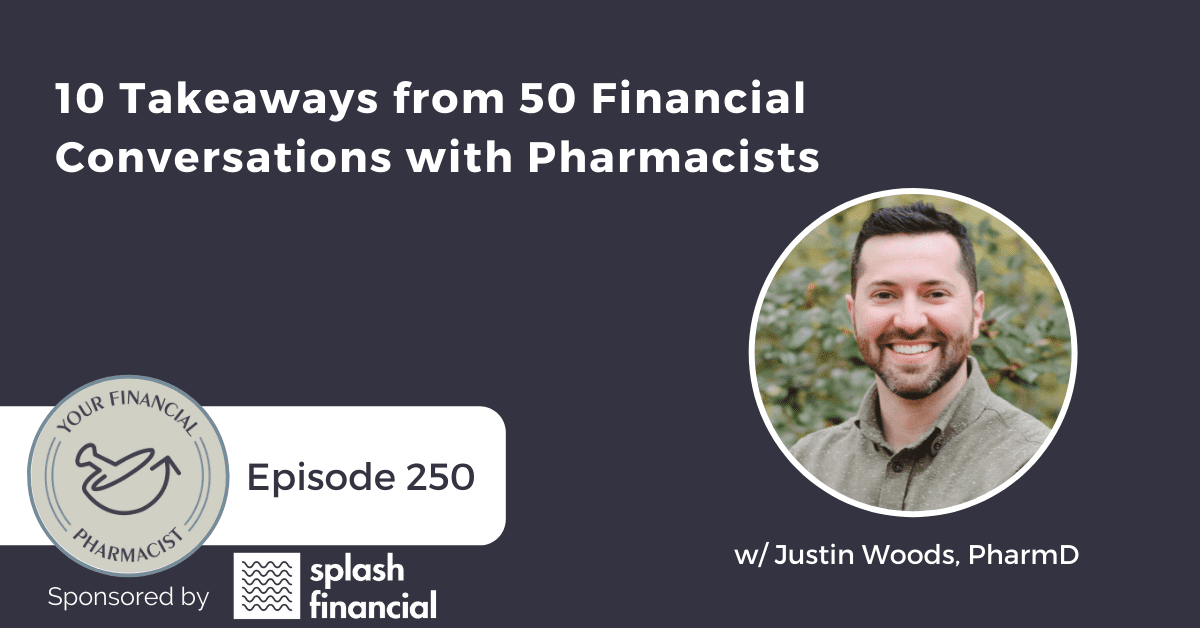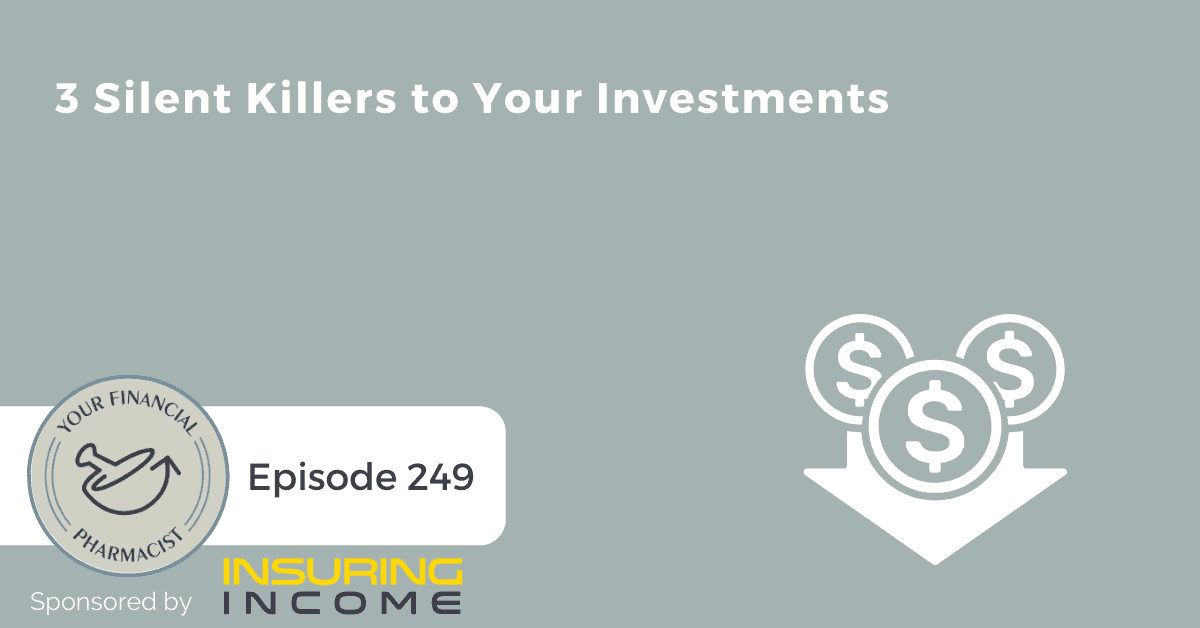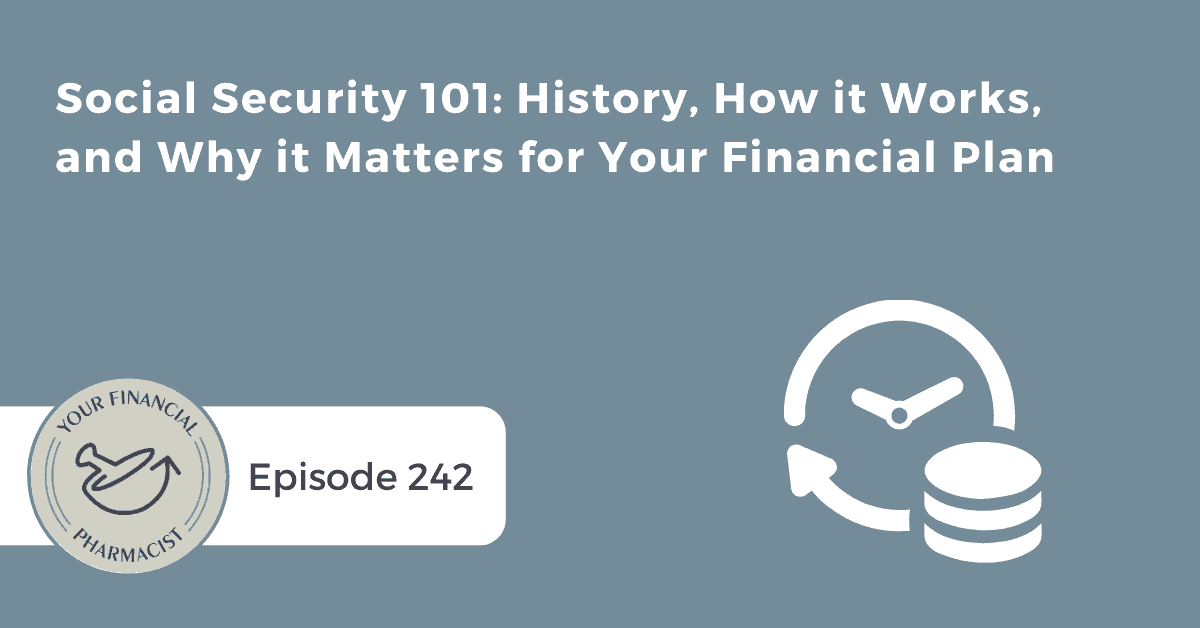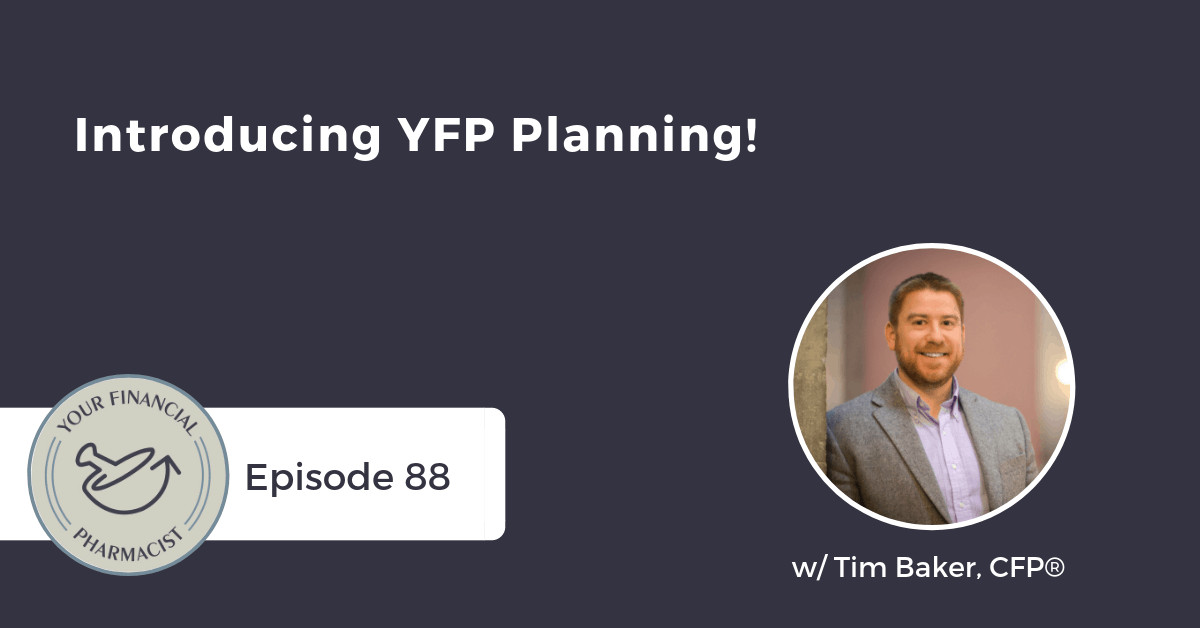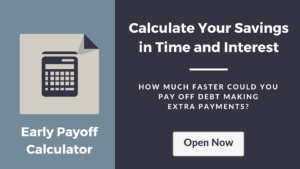Justin Woods, PharmD, MBA shares takeaways from 350 financial conversations with pharmacists looking to work with a financial planner.
Episode Summary
Navigating the world of financial advice can be a tricky thing. You’re often confronted with baffling jargon, an overwhelming amount of choice, and a lack of transparency, which will typically leave you feeling more confused than when you started. Here to help us unpack these topics today is YFP team member, Justin Woods, PharmD, MBA who has had over 350 financial conversations with pharmacists! We talk with Justin about why pharmacists tend to be skeptical when it comes to hiring a financial planner, the various terms and titles used in the financial services industry, and what outcomes you should expect as part of the financial planning process. Tuning in you’ll learn about key factors that hold people back from pursuing financial advice — like previous negative experiences — as well as an overview of how the financial services industry has changed over the years, and how this impacts clients. We also discuss key terms, like “fiduciary”, and how understanding their implications can help you navigate the industry, before unpacking the four factors of financial decision-making and how planning can help you live a rich and meaningful life.
Key Points From the Episode
- We welcome back Justin Woods, PharmD, MBA Director Of Business Development at YFP.
- Some of the reasons why pharmacists tend to be skeptical of financial advice.
- How past negative experiences can prevent people from getting financial advice.
- Why it can be so challenging to navigate the financial advisory market.
- The concept of “fiduciary”, what the term means, and why it matters.
- How the financial services industry has moved towards tailored advice.
- Optimizing for a particular niche and the benefits and value that come with that.
- The variety in the types of services on offer (and why it can be overwhelming).
- What clients should expect from their financial advisors in terms of scope.
- An overview of the four factors of financial decision-making: financial analysis, money scripts, emotions, and overall well-being.
- The importance of being comfortable with raising questions with your advisor.
- Establishing the ROI you expect from your financial plan.
- An overview of the various fee models of financial advisors and what to be aware of.
Episode Highlights
“Most pharmacists I talk to have a difficult time really thinking about one person in their circle who works with a financial advisor.” — @justin_woods [0:05:41]
“[Fiduciary] is just a fancy term, right? But it basically means that it’s a person that you can trust with your life savings that is ethically bound to act in your best interest. So oftentimes, I compare it to taking the oath of a pharmacist that a lot of us did.” — @justin_woods [0:12:56]
“You want a particular outcome, but you may not be as concerned with how it’s done as long as you get there. And there is a lot of complicated financial jargon out there that oftentimes can scare people away or make them feel stupid.” — @justin_woods [0:27:05]
“I feel like pharmacists work so hard for this six-figure income and view it as the ultimate security in life. And what I see from pharmacists that I talk to is that the income alone doesn’t give you the freedom, flexibility, or time that a lot of people are looking for.” — @justin_woods [0:30:49]
Links Mentioned in Today’s Episode
- Webinar: A Pharmacists Perspective And Evaluation of the Practice of Financial Planning
- YFP 250: 10 Takeaways from 50 Financial Conversations with Pharmacists
Seven Figure Pharmacist
YFP 208: Why Minimizing Fees On Your Investments Is So Important - Unshakeable by Tony Robbins
- John Oliver Fiduciary
- Justin Woods on LinkedIn
- Justin Woods on Twitter
- Pyrls
- YFP Planning: Fee-Only Financial Planning for Pharmacists
- YFP Disclaimer
- Subscribe to the YFP Newsletter
Episode Transcript
[INTRODUCTION]
[0:00:00.4] TU: Hey everybody, Tim Ulbrick here, and thank you for listening to The YFP Podcast, where each week, we strive to inspire and encourage you on your path towards achieving financial freedom.
This week, I welcome back on to the show, YFP team member Justin Woods. During the show, Justin shares takeaways from over 350 conversations that he has had with pharmacists, looking to hire a financial planner.
Some of my favorite moments from the show include hearing why pharmacists are skeptical when it comes to hiring a financial planner, the various terms and titles used in the financial services industry, why fiduciary and fee-only matter, what outcomes to expect as a part of the financial planning process, and the various ways that financial planners get paid.
Whether or not you decide to work with our team of certified financial planners at YFP Planning. Our hope is this episode will give you the insights and information of what to look for when hiring a financial planner.
If you are interested in joining more than the 280 households in 40-plus states that work with YFP Planning for one-on-one financial planning and wealth management, you can book a free discovery call at yfpplanning.com. Whether you’re just getting started, in the middle of your career, or nearing retirement, our team is ready to help. Again, you can book a free discovery call at yfpplanning.com.
All right, let’s hear it from today’s sponsor, Pyrls and then we’ll jump into my interview with YFP Director of Business Development, Justin Woods.
[SPONSOR MESSAGE]
[0:01:26.6] JW: This is Justin Woods from the YFP team with a quick message before today’s show. If you’re tired of relying on shared passwords or spending hundreds of dollars for drug information, we’ve got great news for you. Today’s podcast sponsor, Pyrls, is changing the game for pharmacy professionals. Pyrls offer us top drug summaries, clinical teaching points, a drug interaction checker, calculators, and guideline reviews all in one user-friendly resource.
They also recently add free weekly quizzes to test your pharmacotherapy knowledge. Whether you’re on your web browser or accessing the mobile app, Pyrls has got you covered. Visit pyrls.com to get access to more than 25 free pharmacotherapy charge to get you started. Upgrade your drug information resources today with Pyrls, don’t miss out on this game-changing resource.
[INTERVIEW]
[0:02:21.8] TU: Justin, welcome back to the show.
[0:02:23.7] JW: Thanks for having me, Tim.
[0:02:24.8] TU: Excited to have you in this discussion that we have today. Also, an exciting time for you Justin, some of our listeners may know, many may not that you and Sarah, you have twins on the way, super exciting phase of life. How’s the preparation coming? I don’t know if you can be fully prepared but how are you feeling?
[0:02:42.4] JW: Yeah, we feel, I guess, mentally prepared, right? As two pharmacists, we want to plan for everything and so we’re just anticipating the arrival. My wife is 33 weeks pregnant right now. So I guess, on average, twins go to 38 weeks. So it could be any time now to be honest.
So yeah, we put the car seats in the minivan this morning, and yeah, exciting stuff around here, a very expensive season of life with daycare and whatnot but yeah, we are excited nonetheless.
[0:03:14.4] TU: You know, it’s funny, I was reflecting back. You know, I’ve talked about this, you know, as Jess and I had our four boys and you know that adjustment from one to two and then you go two to three, everyone says, “Hey, you go from man to man to zone defense.” You’re going right there, right? One to three so.
[0:03:26.6] JW: Yeah, we’re going right there, we’re going right there. So thankfully, our toddler who is two, a little bit over two, already knows that there are two babies on the way. She’s already been trying to be very helpful, so we’re hoping to bring her into the defensive scheme a little bit as well.
[0:03:42.2] TU: Yes, I love that, I love that. Well, it’s been a while since we had you on the podcast on episode 250, we talk about 10 takeaways that you had from 50 financial conversations with pharmacists, colleagues. We’ll link to that episode in the show notes and for today’s episode, we’re going to dig deeper into the now over 350 conversations that you’ve had with pharmacists and what you’ve learned, and why we struggle evaluating professional financial advice.
Why we struggle perhaps in choosing and hiring and evaluating a financial planner. Our goal being, Justin, that we can pull back the curtain on some of the secrets about financial planners so that our listeners can feel confident in who they partner with, whether that’s with us, we hope so, or whether that’s with someone else and certainly, that’s okay. We want them to be informed in that process.
So Justin, let’s start this off. One of the key takeaways that you’ve had, again in now over 350 conversations with pharmacists all across the country at all different phases of their career, which I too noticed early on in my experience building YFP is that pharmacists are skeptical when it comes to hiring a financial planner. That’s not to say a bad thing, right? Tell us more.
[0:04:54.2] JW: Yeah, it’s not a bad thing, right? But when I talk to pharmacists and I survey them to understand how they feel about financial advisory services they shared, we’re just confused about what advisors do, skeptical if they can actually trust them, right? That trust piece is huge or some folks who have actually regretted their decision to work with a particular advisor and oftentimes, when I tell people about the work our team does and the breadth and depth of the topics, the advice that we offer, they share, “Gosh, I didn’t know financial planning covers all of that” right?
And in my opinion, a major factor of that is that people often don’t talk about money with family, with friends or colleagues, and from that standpoint, it’s not talking about money, they’re probably not talking about their financial advisor either. So in most pharmacists I talk to have a difficult time really thinking about one person in their circle, right? Who works with a financial advisor.
In fact, in 2022, only 35% of Americans worked with a financial advisor, and a more interesting stat, is that a study done by AARP found that 45% of people would rather visit the dentist than make an appointment, an initial appointment to talk with a financial advisor and nothing against a dentist, right? Because my mom was actually a dental hygienist for about 35 years but people distrust financial services as an industry.
They don’t know how to choose or vet a good advisor and they don’t even know what an advisor does, right? So the other side too are folks who are in that pre-retirement phase is 74% of Americans have shared that they wish that they could get a financial planning do-over or set up a better financial situation. So there’s really that this gap between what people are afraid of, maybe because they don’t know enough about it, and what they wish they had done about in the first place too.
[0:06:46.4] TU: Yeah, that’s really – I mean, the visit to the dentist is fascinating, right? I think of you know, that process obviously. I love dentists too but not necessarily my favorite place to go and so I’m curious to pull this back a little bit further, Justin. From all these conversations you’ve had with pharmacists, why is this discomfort, this feeling, this, “Hey, I’d rather not do this at all or look at it” do you have a sense that it’s from maybe some that have had a previous experience that left a bad taste?
Is it influence of you know, maybe a parent or family or friends or others? Is it just this topic of personal finances you mentioned is one that especially if I’m maybe not exactly where I want to be that I don’t want necessarily someone, you know, making that worse or me feeling judged by where I’m at with my financial position, what’s the read you get on why the pharmacists you speak with maybe are even though they’ve taken that step, obviously, to meet with you or you wouldn’t have those conversations, still maybe not the most comfortable thing that they want to be doing?
[0:07:47.7] JW: Yeah, because there is a lot of confusion out there about what is a financial advisor and when most people think of financial advisor, they think of just the investment piece and realistically, that is only one piece. If you think about the term “financial advisor” technically, it’s just a generic term with no precise industry definition.
So this title can describe many different types of financial professionals like stock brokers, life insurance agents, tax preparers, investment managers, and financial planners. There are some estate planners and bankers who also may fall under this category as well. The only distinction is that this person has to provide guidance and advice.
If they just press a button and place trades for clients or simply prepare your tax return without providing that advice piece, they would technically not be a financial advisor and according to the Bureau of Labor Statistics, there are more financial advisors than pharmacists.
In fact, the job outlook for financial advisors has a growth of 15 per percent compared to 2% per pharmacist and these numbers alone show that the demand for people seeking professional advice about their situation and the number of options a pharmacist has when it comes to actually hiring a financial advisor.
So that process of vetting an adviser and find out where that best fit is that can feel overwhelming at the same time.
[0:09:15.8] TU: Yeah, I’m so glad you brought up the numerous titles that can be used. One is I often share with folks is you know, the term financial advisor or financial planner or wealth manager, whatever term you may see in and of itself isn’t really going to tell you a whole not about what this person does. We’ll talk about fees and how they charge and scope of services and all that.
Really, the ownership is on the consumer to understand you know, “What does that mean and are they qualified and are we a good fit?” we’ll talk about fiduciary and some of those responsibilities as well and I think because of that variety and because of that confusion, Justin, I suspect that that may be playing into not only the low percentages of folks that are engaging with advisor but also that feeling of like, “Uh, I’d rather just not engage.”
I do still think there’s a piece of, “Hey, maybe I had a bad previous experience that validated some of the concerns that I had” or maybe I have a family member, a parent, a relative, someone that’s saying like, “Hey, don’t work with an advisor” Because they had that experience that maybe was less than ideal, you know, themselves or as we talked about just a little while ago, I do think for some, especially if they’re in a position where they think, “Hey, maybe I should be progressing further than I have thus far.”
That you know, engaging with someone that is going to, you know, reinforce some of the opportunities of where things could be a little bit better could add on to some of those negative feelings and feelings of self-judgment that people may have as well. So lots to consider and unpack there and this reminds me, Justin, when Tim Church and I wrote the book Seven Figure Pharmacist.
We sat down to write this chapter and I kid you not, a chapter on evaluating a financial planner, understanding your financial planner, by far it was the chapter that took us the longest to write and had the most edits and revisions and it’s because of everything that we’re talking about. You know, there’s not a simple understanding of what these terms mean.
I think, more than anything, there’s some good questions that people can be asking to try to figure out more about, “What are the credentials, what does the scope of service look like, what does the fee, is this a good fit for me?” but you know, we’re used to the model of, we know what a PharmD means, right?
There are variances in educational programs but there’s a set of accreditation standards for good reasons when it moves to you know, the public understanding, what is a pharmacist, what does a registered pharmacist mean, what does a PharmD mean, there’s some level of consistency, right?
Same thing with the PGY1 accredited, PGY2 board certification and I think my experience and I suspect for many of our listeners, we adopt that mindset and we try to apply it to the financial services industry and it doesn’t work because there’s so many differences and nuances in this industry, and if we don’t do the homework and understanding a lot of what we’re talking about here today, I think that further validates that feeling of like, “Ugh, this is confusing.”
“I have this skeptical feeling, maybe this is a little bit you know, not ideal for what I’m looking for” or “Hey, I don’t mind paying a fee” is something I hear often but I just want to make sure that it’s transparent and I know that you know, this is a good investment that I’m making. So really good breakdown, Justin, of the titles and some of the concerns that are out there in the confusion of it. What about the concept, Justin, of fiduciary?
This is a common question that I get. I think we’ve made some end roads into this term becoming something that people are looking more for but there’s still a lot of confusion of like, what is a fiduciary, why does this matter and why isn’t everyone a fiduciary? It just seems like common sense.
[0:12:54.6] JW: Yeah, definitely, and it is just a fancy term, right? But it basically means that it’s a person that you can trust with your life savings that is ethically bound to act in your best interest. So oftentimes, I compare it to taking the oath of a pharmacist that a lot of us did, right? But if you partner within an investment broker, technically, they only follow a suitability standards.
So they believe that a recommendation of a transaction involving a stock or bond, right? It’s based on what the customer may disclose in connection with that recommendation. So they’re only looking at a piece of that person’s life or what that person has told them. So in most cases, those who follow suitability, they’re not required to collect as much information, data about you before they tell you what to invest your money in.
It’s kind of like a pharmacist only reviewing half of a patient’s medication list before making a recommendation, right? I actually met with a pharmacist last week who said that she asked her financial advisor if he was fiduciary and he replied with, “I always do what’s best for you” and that may be true, right?
There are a lot of good financial advisors out there but being fiduciary, right? Had taken that oath, demonstrates a level of commitment and transparency that the advisor is held to that standard at that standard at the same time.
[0:14:19.5] TU: Yeah, that’s a good call, Justin, right? Just because someone is not a fiduciary or something we’re biased toward and obviously not a fee-only advisor, meaning that you know, in a fee-only model, you are compensating the advisor for the advice that you – they are giving you, they’re not getting paid by recommendations of insurance products, your investment where they’re essentially getting a kickback.
You know so we use these terms, fee-only and fiduciary but just because someone is not fee-only or fiduciary, it doesn’t mean that they’re incompetent. It doesn’t mean that they’re a bad person. It really means that “Hey, we got to do a little bit more homework to line up.”
Well, why aren’t they a fiduciary, why aren’t they fee only and what implications may that have to me and my financial plan, and is that the best option or not in terms of engaging or working with someone in that area? So I think it is a really important concept, John Oliver, Justin, has a great segment.
[0:15:08.2] JW: He does. Yeah, I’ve watched that a few times, it’s funny.
[0:15:10.4] TU: Great segment on fiduciary and suitability if you want to learn more about this. The example I always give Justin, when I present in this topic is that if I’m going to buy a suit, right? And I got to two different suit shops, one is providing suits under a suitability standard, if we play this out, one is under a fiduciary standard.
I like a nice slim-fit suit, right? That’s appropriate for the width of my shoulders, my arms, my leg, overall physique and so if I go to the fiduciary shop and I say, “Hey, these are my measurements, they’re going to do the work and they’re going to get me a nice fitting to that is the best. It’s the best fit for me and my personal situation” that’s the comparison to the fiduciary standard of the financial plan.
If I go to the suitability standard suit shop, you know maybe they don’t take the right measurements or they don’t have to do all of that analysis. Maybe I’ll leave with a little bit of a baggy suit, right? Too long, doesn’t get tailored. It’s not terrible, maybe it is on some level. You can argue it’s appropriate but it’s not necessarily the best fit, right? Or the best option for me and that comes to play exactly in the financial plan.
Whether you’re working on, you know, retirement planning or other parts of the financial plan, you know we really want to make sure that as you are evaluating, are all parts of the plan that that fiduciary is really looking at what is the best option for you and your personal situation. So a fun example and I think, you know, to draw this to pharmacy.
Like could you imagine walking into some pharmacies, Justin, whether the pharmacist was you know, obligated to do all of these things whereas in some cases, you know and the other that they only have to do half of the DUR. It just doesn’t make sense, right? As we think about drawing lines.
[0:16:45.8] JW: Right, exactly, exactly, and Tim, to tie off your analogy a little bit, imagine if you were to go into that fiduciary suit shop and that suit shop only worked with pharmacists or people of your body type and height and I think that gets to what the financial planning industry has molded it into is this focus on niche or niche. We can debate that term too, but the financial advice industry for a long time was predominantly transaction-based, where the advisers earned a living solely from those commissions that they earn on whatever product that they sold.
So there was really no need to meet with those clients until there was an opportunity to implement a product, say like life insurance for example. So it was essentially for advisors to be as broad in their messaging and marketing as possible, right? To cast a really large net to reach anyone with a pulse who might buy that product but then in the last decade, we’ve really seen a movement to provide tailored advice and it’s a really caught on, where you developed a unique expertise for working with those clients and the problems that they face and that in turn, leads to development of services and scope and a business model that really fits a client for their need.
So for example, obviously I’m biased because I’m a pharmacist but if I was asked to recommend a treatment regimen for like Osteomyelitis in an adult, right? I could spend hours researching that topic and hopefully feel confident in my decision or I could just call a friend, who is a PGI2-trained infectious disease pharmacist who has that experience, who has that knowledge to help me feel confident in the solution for that patient specifically.
So that’s kind of where I feel the benefit or the optimization of that niche comes in. Obviously, that perspective is biased too since our financial planning team, we primarily work with pharmacists like us.
[0:18:52.5] TU: Yeah, it’s a really important point though, Justin. Someone recently was kind of challenging this concept on LinkedIn a few weeks ago and I really started to think more deeply about it. Obviously, it’s the bread and butter of what we do and the more I think about it, the more I even firmly believe in the value of the niche and this individual is really, you know, kind of arguing against like, “Why is there a need to really differentiate financial planning services for healthcare professionals?” or more specifically, in what we do with pharmacists and we see very specific examples of this on a weekly basis.
There is value in repetition here. We have a planning team of five CFPs that work with you know, return on 80 households all across the country and you know some of the things that come up over and over again like, “Hey, I’m working on a student loan forgiveness plan and I’m working with a nonprofit hospital.” “Oh, by the way, we’ve had you know, 15, 20, 30 other people that are navigating this” maybe not that same employer, although we do have some of that overlap with institutions like the VA for example.
But we’ve been down this path, we’ve crossed these T’s, dotted the I’s, we’ve seen where the bumps are along the road or even just more generally in some of the trends that we see of pharmacist in terms of income and barriers and challenges and you know, where they’re at, at certain points of net worth throughout their career. I mean, all of these things compound over time with some of the experience and I do think that there’s a lot of value that can come from the niche.
[0:20:21.4] JW: Yeah.
[0:20:23.0] TU: Variety also comes Justin, in the types of services that are offered. This is one that I think gets overlooked so often. You have these conversations way more than I but it feels like there’s this general assumption that like, “Hey, I’m looking at three financial planners” and not necessarily asking the question to understand, “What does that relationship actually look like? Who are the clients that they work with? Are they like me?”
Do they have experience in these areas? So I’m really referring here to the financial planning process and what a client can or cannot expect in terms of scope of service and there are wide variances here. Tell us more.
[0:21:02.7] JW: Yeah and I first want to start with an example that I had last week, I’ve gotten on a call with a pharmacist from Ohio, and right out of the gate, she kind of asked us about our fees and I was very transparent that if you’re only evaluating based on fees of cost, it’s going to be a raise to the bottom because our financial planning model is not the “cheapest out there” but you really have to advocate for yourself and understand, “Okay, does the scope of the service, does the process that this team or this person offer, does that fit me exactly?” and pharmacists want that structure and the financial planning process provides that too.
So it really starts with collecting all of your data and talking with clients that understand your financial situation. So through that conversation with a planner, they can map out both the short and long-term personal and financial goals. So if you look at my financial plan, it certainly has all the big things like retirement and paying off our student loans that are still there but it’s got other things too like going to Disney every year, right?
My wife and I want to do a trip to Africa for our 10-year anniversary, it’s got our beach home in there. So it is really establishing, okay, a road map of where all your goals fit in and then how do we use your income or money as a tool to reach those outcomes at the same time. So it’s kind of a traditional soap note, where the CFP professional, right? Your financial planner will look at this objective, the objective, then they’ll develop that assessment and plan to maximize the potential, the probability that you will reach those goals and achieve those outcomes.
So they often support you put the plan into motion and then monitoring some financial lab value, so to speak, to really understand that progress and making financial decisions, that can be broken down into the interplay about four factors that often aren’t talked about. So there’s the financial analysis, there’s the money scripts, there’s emotions, and there’s the overall well-being too.
And unfortunately, financial analysis has been viewed for too long as the overriding predominant factor in making a good decision but if we boil every decision down to a cost-benefit analysis without giving it the proper – consider the other factors, then we’re doing a disservice to our clients too. So without understanding the money scripts, you know we can’t really understand the client’s beliefs and values in financial decision-making.
An example of that is, you know, some of our clients have student loans and so often times that may come up in a conversation. I had one pharmacist couple who shared that their partner had been in a life-threatening accident. So that really changed their perspective on what they found meaning on in life and they really didn’t care about the student loans. They didn’t care about the math around interest.
They just want to pay the minimum amount and live their life now too. So it is all about working with somebody who understands what that process is and can really help you balance those personal and financial goals at the same time.
[0:24:17.3] TU: Yeah and Justin, the more I experience, you know, for Justin and I and our family and our financial plan, I feel like with each passing year there is a greater and greater appreciation for less about the math, more about the emotions, more about the goals, more about the behavior and I think part of this might be some overconfidence. You know, I even had that I would say early in my career of like, “I’m good with math, I can punch a bunch of numbers.”
But executing on the financial plan versus just developing one or two very, very different things and I think this is such an important part as you’re evaluating different services. You know I think that many pharmacists, myself included, we’re analytical human beings. We see service, we see price, we compare, those often are not apples to apples as you’re looking because of what we’ve been talking about here throughout the episode.
So you really have to pull back the onion of, “You know, what is the scope of service? What is the fees that are being here? What are they going to cover, what are they not going to cover?” you know? Do they typically work with individuals that are working through the challenges that I have in my financial plan? You know, if I have USD 200,000 student loan debt, you know most firms may not work with individuals that are early on their credit.
Do they even know some of the nuances on student loan repayment? So I think there’s an appreciation that’s happening that to your point, much of the history around the planning relationship is focused on the math on the analytical side I think because of the evolution of FinTech. We’re seeing some of that become more of a commodity and I think that’s going to lead to more of a value of the relationship and really looking holistically at the plan.
The things that you mentioned are what ultimately we hear from people about success and living a rich life, right? The trip to Africa, the beach home, the going to Disney every year, like if you and Sarah wake up and because you had a really good analytical math person doing the planning and you have USD 3.5 million saved but you haven’t lived a rich life, who cares, right?
[0:26:12.5] JW: Right.
[0:26:13.0] TU: So I think that as individuals are looking at option A versus B versus C, what’s the scope, what’s the price, what are the expectations, do they have my best interest in mind, how often are we going to be meeting? These are the types of things that we want to be evaluating.
[0:26:27.8] JW: Yeah, yeah. I think pharmacists, myself include the way that we are trained, the way that we think. We often get focused in on the mechanism action or the process in ensuring that the process itself will help us achieve those outcomes. When we think about it from our profession, so the general public oftentimes does not have an understanding of how the drugs that they take work nor do many of them care, right?
But they have confidence in their doctor and their pharmacist who give them advice, education, recommendations as well. I feel like it’s the same thing when you consider financial advice, right? You want a particular outcome but you may not be as concerned with how it’s done as long as you get there. And there is a lot of complicated financial jargon out there that oftentimes can scare people away or make them feel stupid too.
I was actually speaking with two pharmacists last week from Kansas and they shared how they’re trying to balance their personal and professional life, acknowledge that they are not confident about their financial literacy or what they know. So they shared, they were really looking for somebody who could educate them, help them understand their financial situation to feel more in charge, take control, and just give them peace of mind of where they might end up.
I felt like the husband brought a really good analogy there, he went on to show that as a pharmacist, he doesn’t jump into a conversation with a patient about the Pharma Co. connects of Vanco, right? But I feel like many financial, traditional financial advisors do that exact thing where they show you some fancy charts and graphs to make it just feel confusing, to justify their value over time but if you currently work with an advisor, right?
Are you comfortable telling them you don’t understand something and asking questions because I’ve heard this exact scenario from my sister in fact, where she doesn’t feel comfortable saying she doesn’t know something with her adviser. So as you said, it is a lot about that, that relationship piece.
[0:28:34.1] TU: Yeah and I think that’s a great example. You know, that couple you mentioned, you know just last week, I heard things like peace of mind, I heard making sure that we have our goals defined. I heard comfortable in terms of financial knowledge and literacy, which is interesting because I think those are some of the greatest outcomes that come from the relationship but they also aren’t necessarily the ones that we look at and say, “Hey, we can punch this in a calculator and determine the ROI” right?
[0:28:59.2] JW: Yeah.
[0:28:59.5] TU: So this is where I think you feel as a buyer, as someone who is evaluating financial planner is a common question, Justin, I’m sure you get is like, “What’s the ROI?” right? “I’m going to invest X and what am I going to get?” and I actually think the better we’re doing on the planning relationship, you talk about living the rich life with the Africa trips, the Disney trips, you know what you guys are doing as family experiences, putting a dollar amount to the joy in living a rich life, we know what that feels like.
But to answer the ROI question, that’s not an easy one and perhaps, maybe not even a good fit if that’s the focus.
[0:29:33.8] JW: Right, exactly. I actually spoke with a pharmacist recently who shared that his expectation working with a financial planner was that our team would return a hundred bucks for every dollar that he paid to work with us and I try to think about that if a patient had come to a pharmacist like that. So imagine if a patient has said, “I expect this medication to reduce my A1C by five percentage points” right?
In reality, there’s so many other factors like compliance, adherence, diet, exercise, access for building too that would be impossible to quantify the exact ROI there too. So what the pharmacist asked, “Okay, if we lower your A1C by five percentage points, what would that actually do for you?” right? I think for most patients, it would help them, one, feel a lot better, right? Less fatigue so that they can keep up with their grandkids at the playground.
Maybe more time, right? Maybe you avoid some microvascular complications that don’t derail your ability to drive across the country in an RV, right? Or maybe prevent a major heart event that allowed you to live longer too. So I feel like pharmacists work so hard for this six-figure income and view it as the ultimate security in life and what I see from pharmacists that I talk to is that the income alone doesn’t give you the freedom, flexibility, or time that a lot of people are looking for.
[0:31:05.8] TU: You can see this. You again, do a lot more of these discovery calls, talking with colleagues across the country that are looking for hiring a financial planner. You see this more than I but I recall many of these conversations where you can in real-time see and feel kind of the split-brain feeling of like, “You know emotionally, these are the things that mean, are most important to me” right?
The peace of mind, the security, making sure I’ve got a good plan, perhaps on the same page with the spouse or partner, and we know that those are very difficult to quantify but then are buyer mode goes on. It’s like, “Okay if I am going to spend X, what’s the return and why?” and so I think this is a hard thing to reconcile but it is an important one for obviously someone to feel good about moving forward.
I think for the expectations from a planning relationship, you know we always say that Justin, sometimes we can move forward with us. We don’t want them coming on board and having buyer’s remorse. That’s not a good fit for them, that is not a good fit for us. So the discovery process, the evaluation when done well and I think this is good advice whether someone’s looking to work for us or with someone else is that you want to feel good about that relationship on both sides.
So if someone is expecting a 101 ROI and you know, we kind of navigate that and we move it forward, guess what? In two or three months, we’re probably going to realize this isn’t a good fit and so I think establishing that upfront is really valuable. Fees, Justin, let’s save the best for last, right? So much variety here when it comes to fees and what someone is paying. Often we hear from folks that, “Hey, I am not paying anything.”
We’re like, “Well, not so fast” so sometimes, this is transparent, sometimes it’s not. So what have you learned in terms of the various fee models that are out there and the expectations that clients have for how they’re compensating a planner for their advice?
[0:32:48.3] JW: Yeah and this is the one question that not many people can answer, right? How do advisers get paid? I say that from experience because my first four to five years of working with an adviser, I had very little understanding of the fee structure, how much I paid, and from you know, 350 conversations with pharmacists, they have a very similar perspective as well. I believe it speaks to the industry as a whole, right?
They are not very transparent about fees, which can certainly add to that feeling of distrust and being skeptical too. So if you’re listening to this podcast, you currently work with an adviser and don’t feel you pay anything, right? That should be a red flag, to ask more questions and be an advocate for yourself to make sure it is a worthwhile investment and if you are working with a financial adviser, there is no such thing as free advice.
So financial advisers typically fall into one of three different payment models, right? There’s commission, there is commission and a fee model, typically it’s called fee-based, and then finally, fee only. So both commission and fee-based, they receive compensation based on specific financial products that they sell you. It could be insurance products, annuities, investment options too like mutual funds.
Fee-only though, those financial planners are compensated directly by their clients for advice, planned implementation, and that ongoing management of all of the assets but I feel like oftentimes people just stop there but that’s not all because if you’re not informed and educated, there are other fees that you may not consider and I learned this the hard way. So in a commission-based model, there are fees tied to the sale and ongoing management of a product too.
So it could be life insurance or disability insurance too, there are things like transaction fees, periodic charges, annual operating expenses. When you look at things like mutual funds, there are often sales charges, also known as sales loads, those are commissions you pay when you invest in a mutual fund. So there are also expense ratios too, so when a lot of folks come to me and say, “Hey, I’m paying X amount for my adviser” oftentimes those do not include those additional expenses like the sales loads, the expense ratios as well.
An example that I had, it is a pharmacist who is working with an adviser, asked that adviser, “What are your fees or how can I understand this a little bit better?” and that adviser replied with emailing them a 46-page document talking about –
[0:35:35.5] TU: I’ve seen those, I’ve seen that.
[0:35:37.0] JW: Exactly, exactly and I feel like you know, seeing a document like that is just kind of praying and hoping that your client won’t read that because I often wonder if the adviser themselves can even explain what their fees are.
[0:35:51.9] TU: Yeah, we talked about this Justin, Tim and I in episode 208 of the podcast, we broke down some of the fees on investments, why that’s so important. You talked about a handful of them. I think the transparency piece here is so important not only for understanding but also again what I shared just a few moments ago, you want to feel good about this relationship, and you know we’re not shy about charging fees.
We feel like our planning team provides a ton of value and the return on investment is much more than the fees that are paid by the client and we’re proud that those are transparent and if we get to that point through transparency and we determine, “Hey, it’s not a good fit because of X, Y, or Z” so be it, right? But the transparency is there and again, whether we’re the solution or someone is looking at hiring another adviser, I think feeling good about that decision.
Feeling good that you know and understand the fees and I think the separation piece is a really important one. So you know, if you’re in a planning relationship where we hear this all the time, “Hey, I’m not paying anything for financial planning, it’s free financial planning but I just bought a whole life insurance, I had a commission associated with it” right? So there is a natural inherent bias in the advice that is being given.
It doesn’t mean again, that they’re a bad person, it doesn’t mean that they’re incompetent but where does the incentive lie for them to be spending your time? Not on comprehensive financial planning, not on your student loans, not about setting your life goals and making sure we’re on track with living a rich life both today and tomorrow. It is about spending time where the dollars are going to be earned. And in that model, it’s selling a product.
That’s one of the things I love about the fee-only models that you’re paying the planner for the advice that they are giving and sometimes that means you are working on traditional things, like investments or retirement planning. Sometimes that means you’re getting in the weeds on student plans or budgeting or buying a home or buying an investment property or working through a difficult conversation with a spouse and getting on the same page.
Talking to mom and dad about finances, teaching your kids about it. I mean, all of these things are important parts of the financial plan but they’re not traditionally incentivized where an adviser is going to spend time on those things if they’re going to be compensated through recommending a certain product.
[0:38:04.4] JW: Exactly, exactly, yeah.
[0:38:06.6] TU: Great stuff, Justin, it’s hard to believe it’s been over 350 conversations. That’s pretty wild, right? When you come back to that.
[0:38:12.7] JW: Yeah. Yeah, I had to look at that number before we jumped on but yeah, 353 as of today.
[0:38:20.0] TU: That’s awesome. That’s awesome. So for those that are listening, if you want to learn more about the comprehensive financial planning and wealth management services that we offer through the amazing team at YFP Planning, our five CFPs, and the folks that support them as well, you can book a free discovery call with Justin. We’ll link to that in the show notes, which is the direct link to his calendar.
You can also go to yfpplanning.com and get to that as well. Again, that discovery call process, that conversation is all about understanding what are the goals, what are the things that you are facing in your financial situation right now. More than anything, Justin is going to be asking good questions, listening, sharing more about the services, and trying to identify “Is it a good fit with what we offer or is it not?”
So it truly is meant to be the discovery in nature, there is no obligation through that process, and again, yfpplanning.com or you can book directly to Justin’s calendar. We’ll link to that in the show notes.
[0:39:12.5] JW: And Tim, I would just add one more thing there if there’s time, is that you know through our conversation, we’ve really only scratched the surface on a couple of these topics. So if somebody is still feeling pretty skeptical like confused about this, I do have an on-demand webinar that I recorded with all of my learnings from these conversations, my own experience too that goes into a lot more depth about the various topics like scope and fees and whatnot.
I feel like for a lot of folks, I think there’s been 60 people who have watched that so far. It really helps them understand and feel empowered about evaluating financial advice if it works for them or not. So that’s typically a really good first step if you are still a little bit uncomfortable.
[0:39:58.1] TU: Awesome, we will link to that webinar in the show notes so folks can access that as well. Justin, thanks so much.
[0:40:04.3] JW: Thanks, Tim.
[END OF INTERVIEW]
[0:40:05.6] JW: Hey, this is Justin again from the YFP team. Thanks for tuning in to today’s podcast. If you’re a pharmacy professional, you know how crucial it is to have access to reliable drug information. That’s why we’re excited to tell you about Pyrls, today’s podcast sponsor. Gone are the days spending hundreds of dollars for access to drug information, Pyrls offer top drug summaries, clinical teaching points, a drug interaction check or calculators, and guideline reviews all in a user-friendly resource.
Whether you prefer accessing information to your web browser or Chrome extension or mobile app, Pyrls has got you covered. Plus, for a limited time, you can visit pyrls.com to get access to more than 25 free pharmacotherapy charge to get you started. Upgrade your drug information resource today with Pyrls. Visit pyrls.com, that’s pyrls.com to learn more. Thanks again for listening.
[DISCLAIMER]
[0:40:58.7] TU: As we conclude this week’s podcast, an important reminder that the content on this show is provided to you for informational purposes only and it is not intended to provide and should not be relied on for investment or any other advice. Information on the podcast and corresponding materials should not be construed as a solicitation or offer to buy or sell any investment or related financial products. We urge listeners to consult with a financial advisor with respect to any investment.
Furthermore, the information contained in our archived newsletters, blog post, and podcast is not updated and may not be accurate at the time you listen to it on the podcast. Opinions and analyses expressed herein are solely those of Your Financial Pharmacist unless otherwise noted and constitute judgments as of the dates published. Such information may contain forward-looking statements, which are not intended to be guarantees of future events. Actual results could differ materially from those anticipated in the forward-looking statements. For more information, please visit yourfinancialpharmacist.com/disclaimer.
Thank you again for your support of the Your Financial Pharmacist Podcast. Have a great rest of your week.
[END]
Current Student Loan Refinance Offers
Note: Referral fees from affiliate links in this table are sent to the non-profit YFP Gives. | Bonus | Starting Rates | About | YFP Gives accepts advertising compensation from companies that appear on this site, which impacts the location and order in which brands (and/or their products) are presented, and also impacts the score that is assigned to it. Company lists on this page DO NOT imply endorsement. We do not feature all providers on the market. |
$800* Loans* ≥150K = $800 100-149K = $450 <100K = $350 | Variable: 5.28%+ APR (with autopay)* Fixed: 5.28%+ APR (with autopay)* *All bonus payments are by gift card. See terms | The "Kayak" of student loan refinancing, Credible displays personalized prequalified rates from multiple lenders | ||
$750* Loans ≥150K = $750* ≥50K-150k = $300 | Fixed: 5.49%+ APR (with autopay) | A marketplace that compares multiple lenders that are credit unions and local banks | ||
$500* Loans ≥50K = $500 | Variable: 4.99%+ (with autopay)* Fixed: 4.96%+ (with autopay)** Read rates and terms at SplashFinancial.com | Splash is a marketplace with loans available from an exclusive network of credit unions and banks as well as U-Fi, Laurenl Road, and PenFed |





